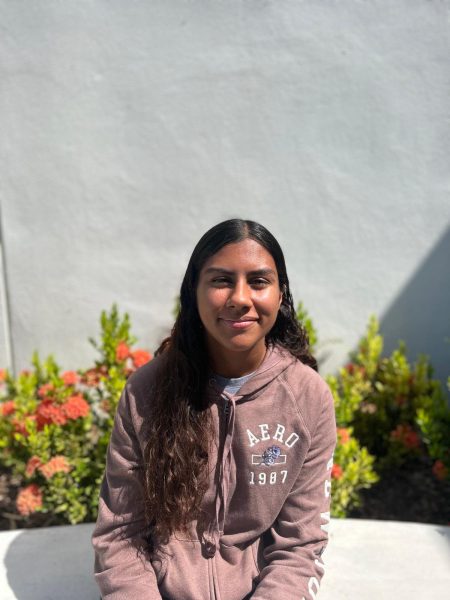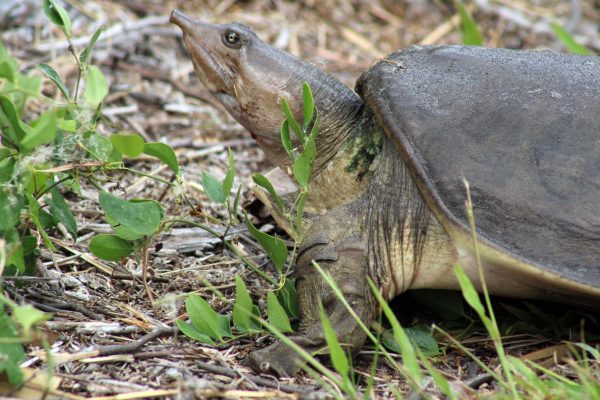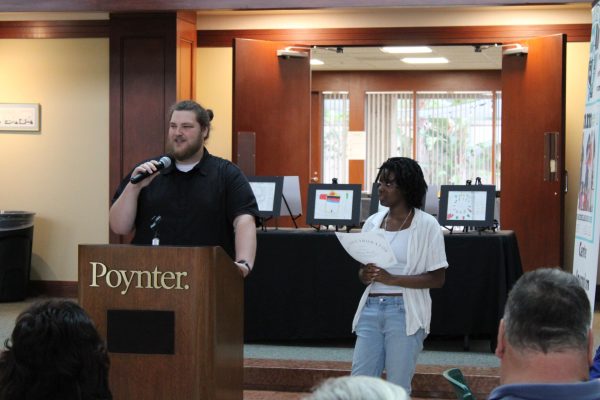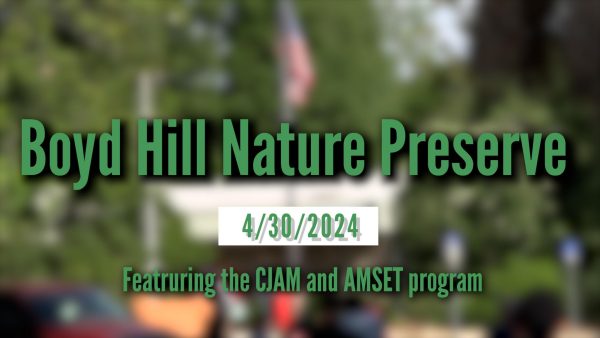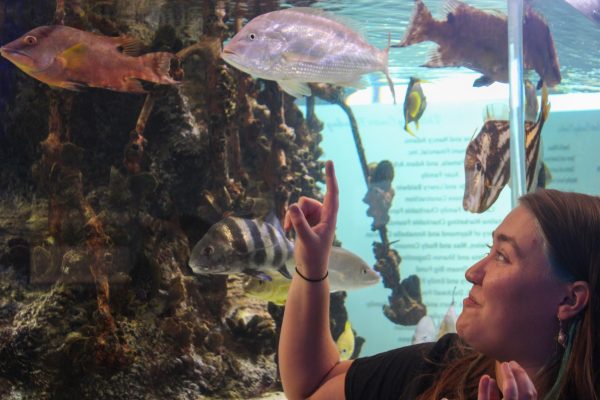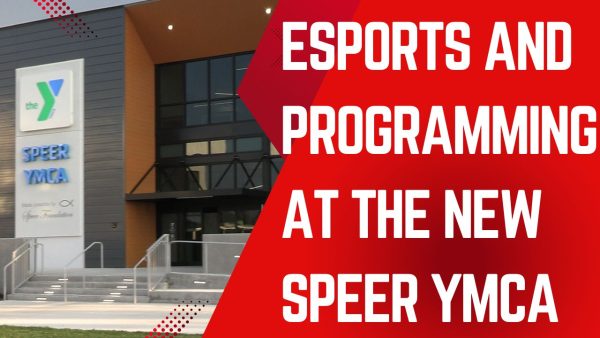Get to know AMSET’s not so furry friends
AMSET students are taught a variety of things including how to care for animals – and especially that of the non-furry kind.
A Lakewood student holds python Tk in the AMSET classroom. Tk is one of the many animals that AMSET students take care of as part of their hands on learning.
December 15, 2022
The Lakewood High School AMSET Program (Academy for Aquatic Management Systems and Environmental Technology) taught by teacher Tracy Teartt and ran by Assistant Principal Tequena Akintonde, has a total of nine animals.
The nine animals included four spiked apple snails from a teacher at Lakewood; two fish, one goldfish from a student project, one betta fish from teacher Ms. Kim; one shrimp; two snakes: a boa constrictor and python, one from a Lakewood alumnus, and an AMSET snake from previous years.
Snails
The spiked apple snails feed themself for the most part. The snails give the students insight on how animals adapt to an ecosystem which is beneficial to the assignments that include research about these creatures.
“I like snails because they are cute, and I think they’ll end up becoming a big help in the ecosystems we have. Since snails are tiny mollusks that help clean up and can also be used as food for other smaller fish,” Junior Jilyanna Rivera-Adams said.
Fish
There are two fish, a goldfish, which is fed TetraMin Tropical Flakes and a betta fish named Sapphire who eats Hikari Betta Bio-Gold. The fish teaches the students how to put together tanks, how to set up an environment for fish, and topics that relate to their ecology units, about different parts of the fish, what type of water they live in, and the different types of water.
“I love fish, I have got my own tank at home too, so I have a bit of experience. I don’t feel so happy since I just seen a fish death. But I do understand that there are lots of reasons fish can die. So just I am trying to learn from other mistakes people have made,” Junior Emily DeLucia said.
Shrimp
Shrimp are self-efficient. Although students keep some type of vegetation in the water for the shrimp, which is debated to either be a velvet shrimp or a ghost shrimp, they can also eat spinach and carrots. The shrimp is part of the curriculum because their first assignment was about ghost shrimp and what it teaches them. What size tank does the shrimp need? What’s the hardest part of keeping a ghost shrimp? What kind of filter do they need? What type of environment they need? AMSET students all get these answers in their teaching.
“I think the shrimp are cool to have around since we haven’t had them in AMSET while I’ve been here. Also, since they’re neat and do good stuff for the environment,” Junior Samantha DeLucia said.
Snakes
The two snakes, a python named Tk, and a boa constrictor named Sofia, are fed either a live rat or mice every two weeks. Snakes teach students about different environmental climates, how snakes can be an invasive species, and how they help and affect the ecosystem.
“I’m in the middle about the snakes. I like the snakes here, but I do not have an interest in interacting with them or taking care of them,” Junior Vincent Cratic said.
Some students are very excited to hold a snake for their first time, which engages them and creates higher participation rates. Even for the students not holding the snake, seeing a snake attack a live rat or mouse is an exciting experience.
When taking care of the animals, it is almost entirely student led. Teartt gives directions of what needs to be done, and the students do as they are directed.
“Having real-life experience with animals is beneficial, especially when some of the lessons are about the animals. Students learn more by being hands-on, creating a sense of responsibility in taking care of the animals in their environment,” Teartt said.
AMSET has not needed to purchase any of their animals, as they have all been donated. AMSET plans on starting a betta club next semester with local middle school students that are interested in betta fish. For this, they will have to break said streak, and buy betta fish.
This means that Lakewood students and middle school students get to work together, and Lakewood agriculture students will get to connect with the younger generation. Doing activities such as setting up a tank, growing vegetation, setting up an environment and more.
“In AMSET, the curriculum involves aquatic aquaponics there’s a lot that involves water and fish, so they’re efficient in classrooms,” Akintonde said.



